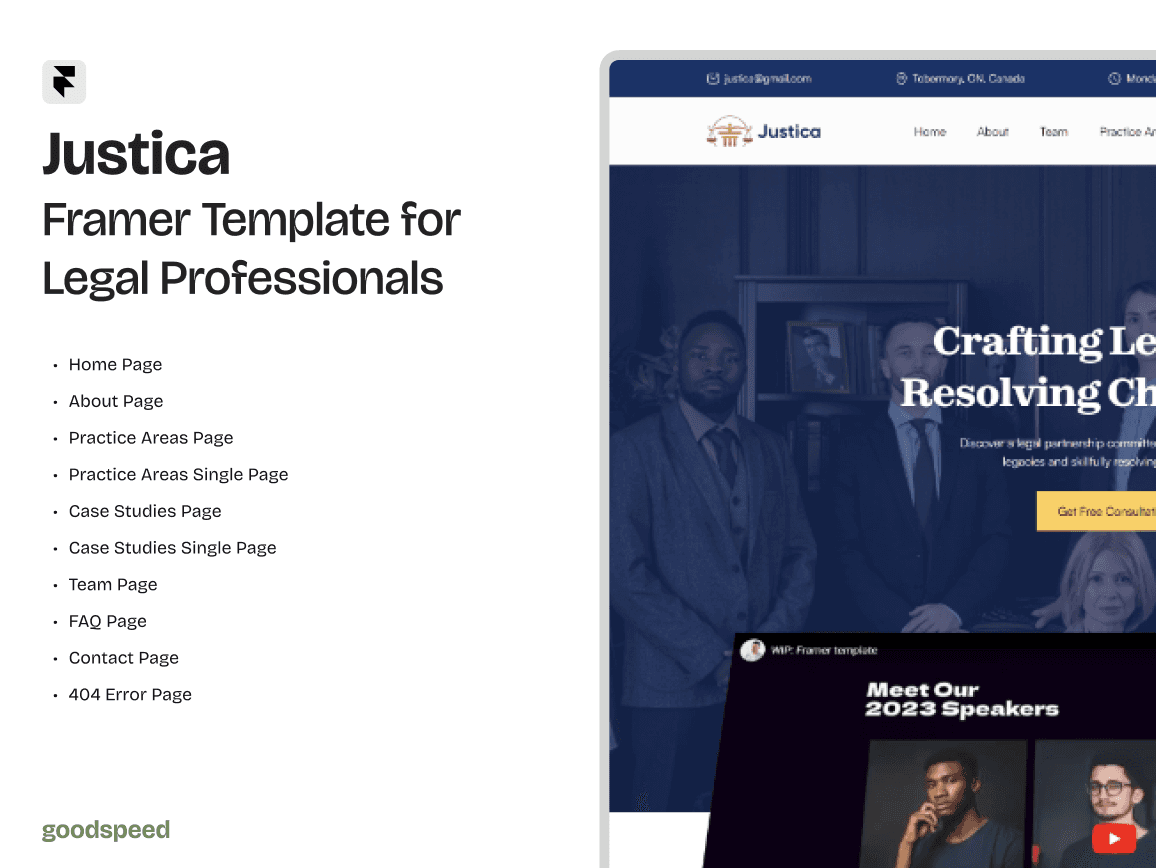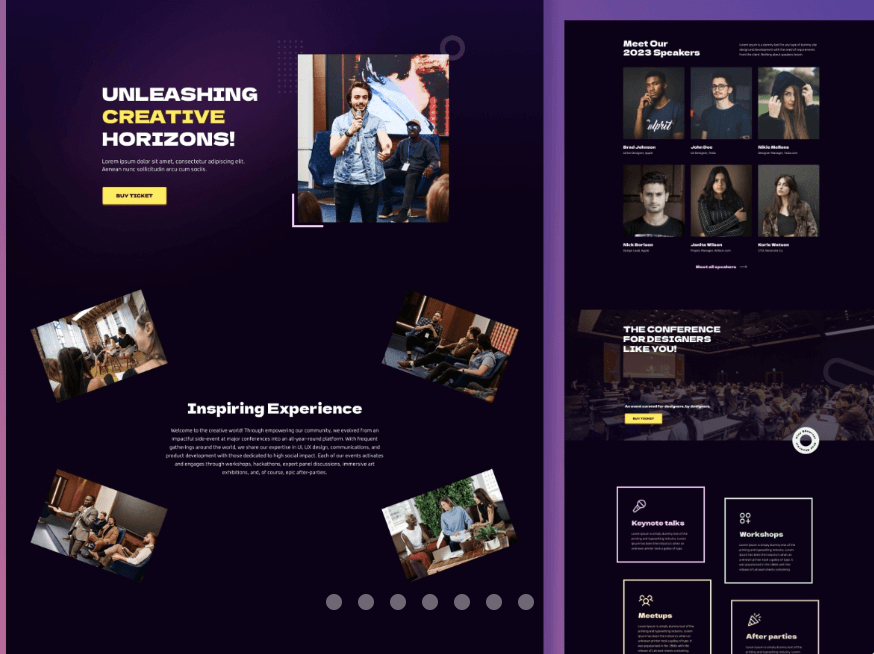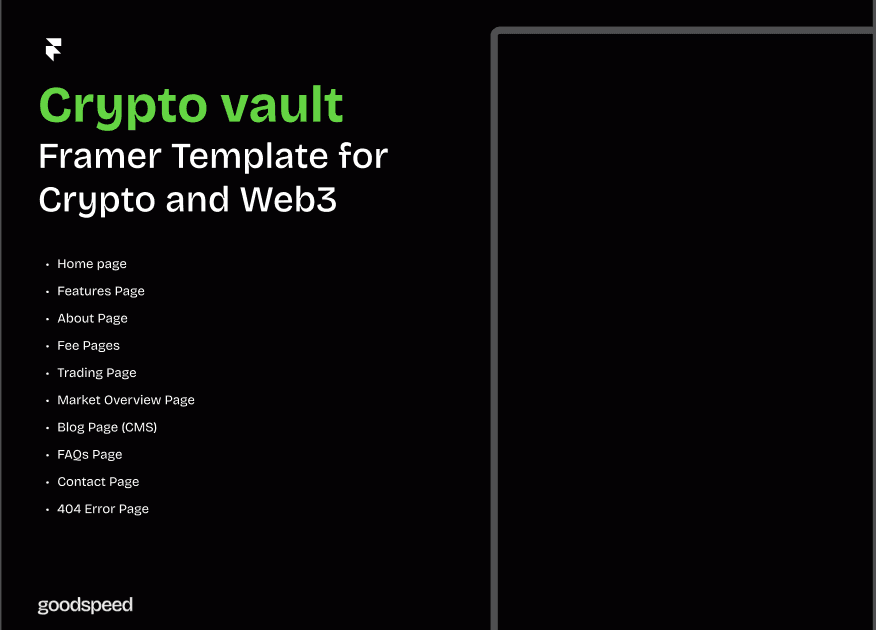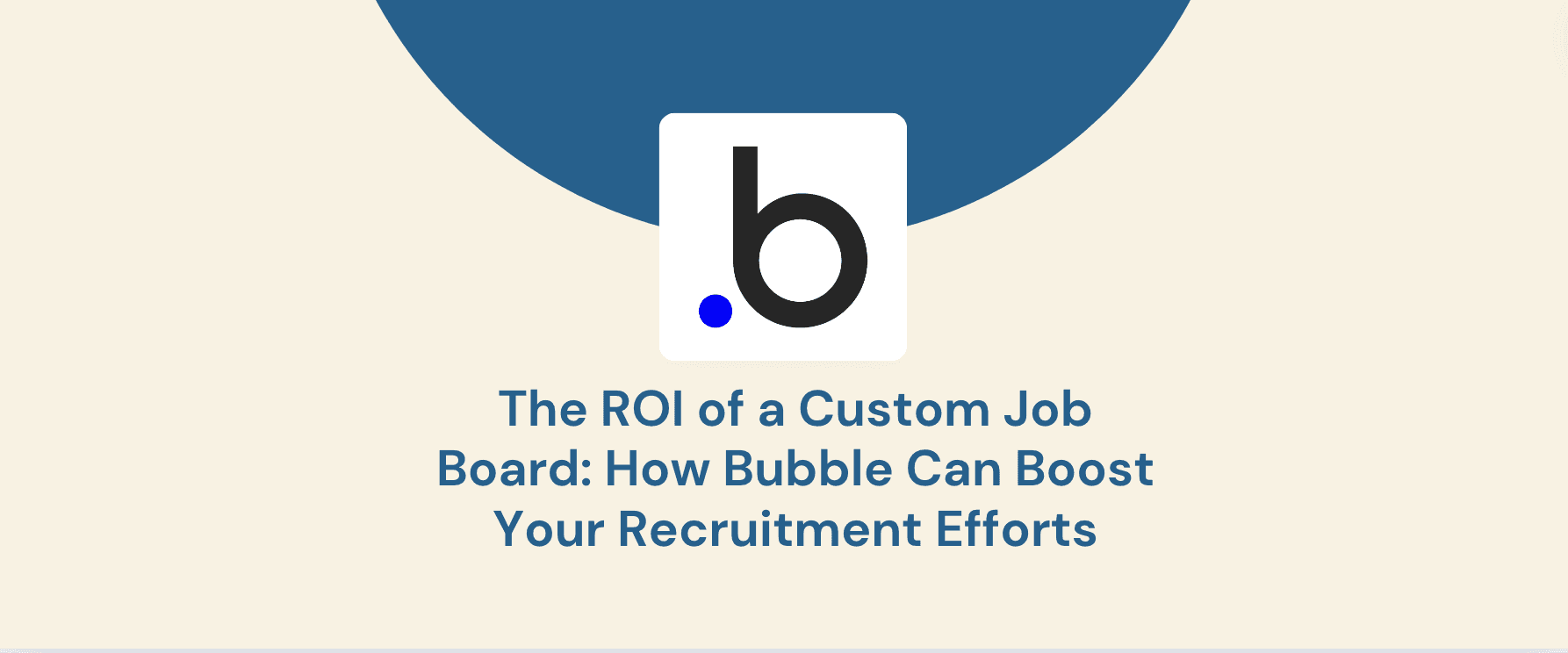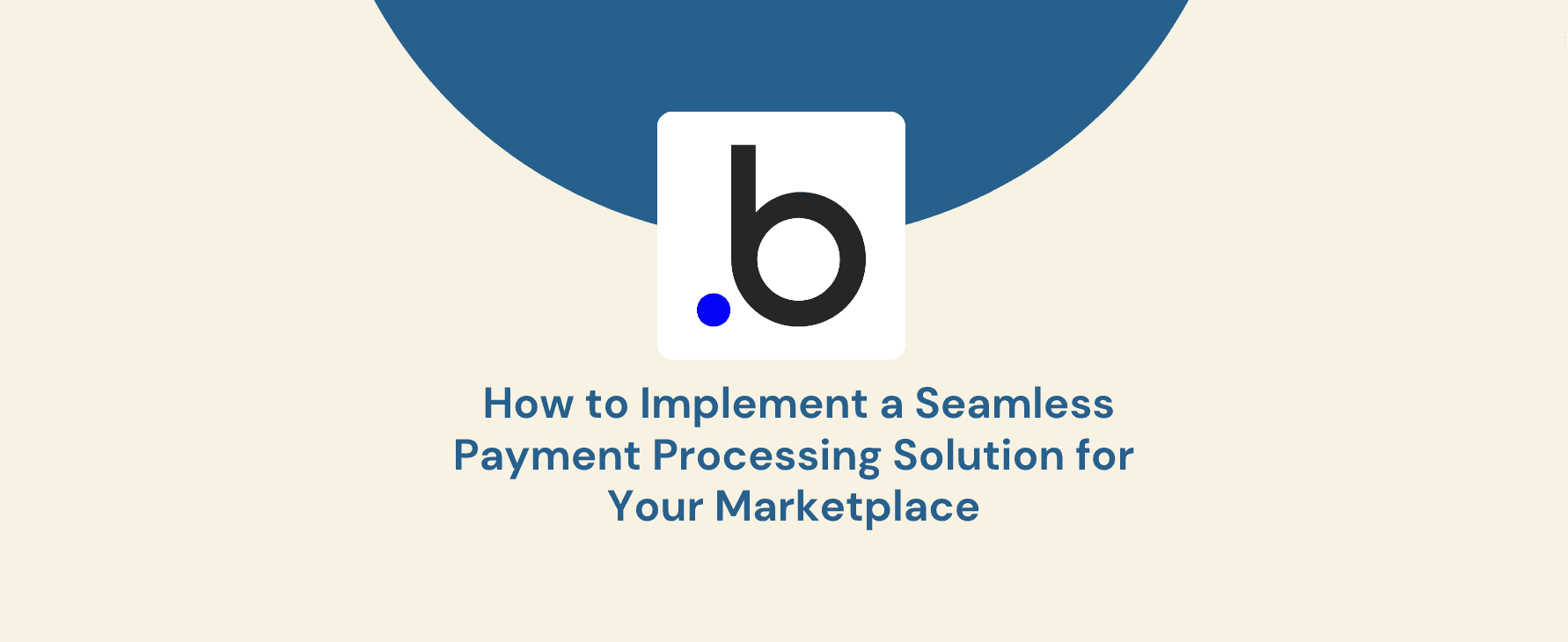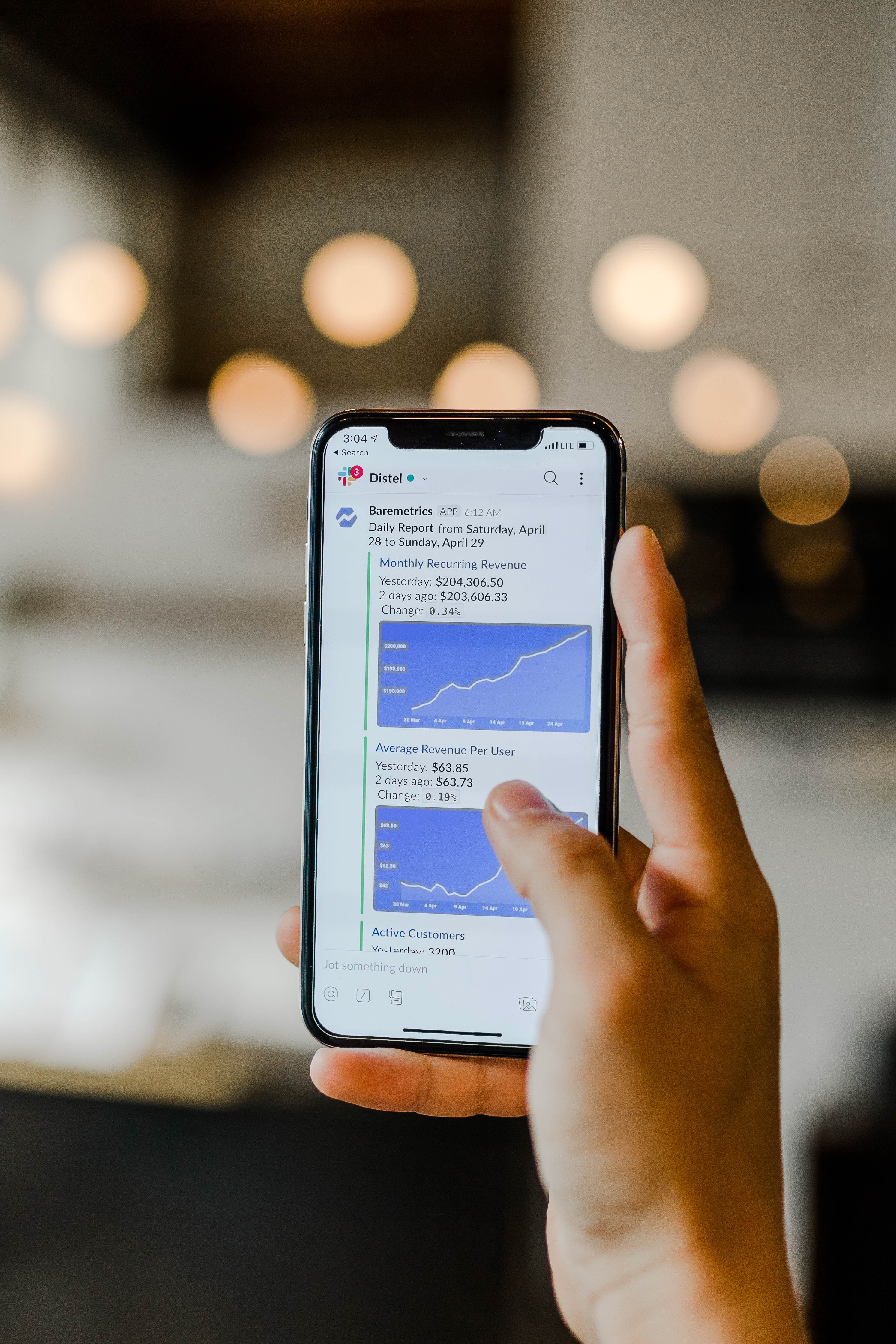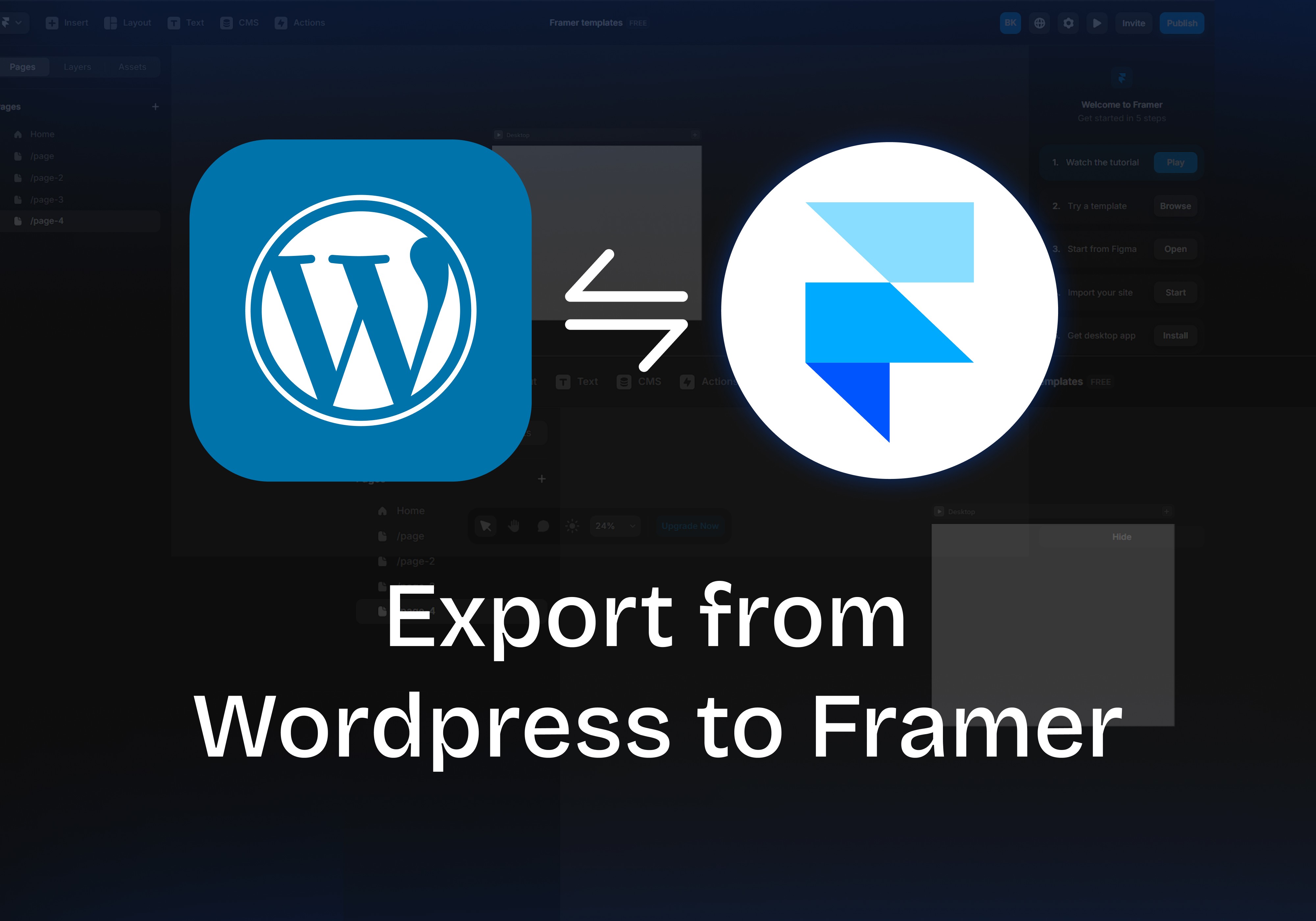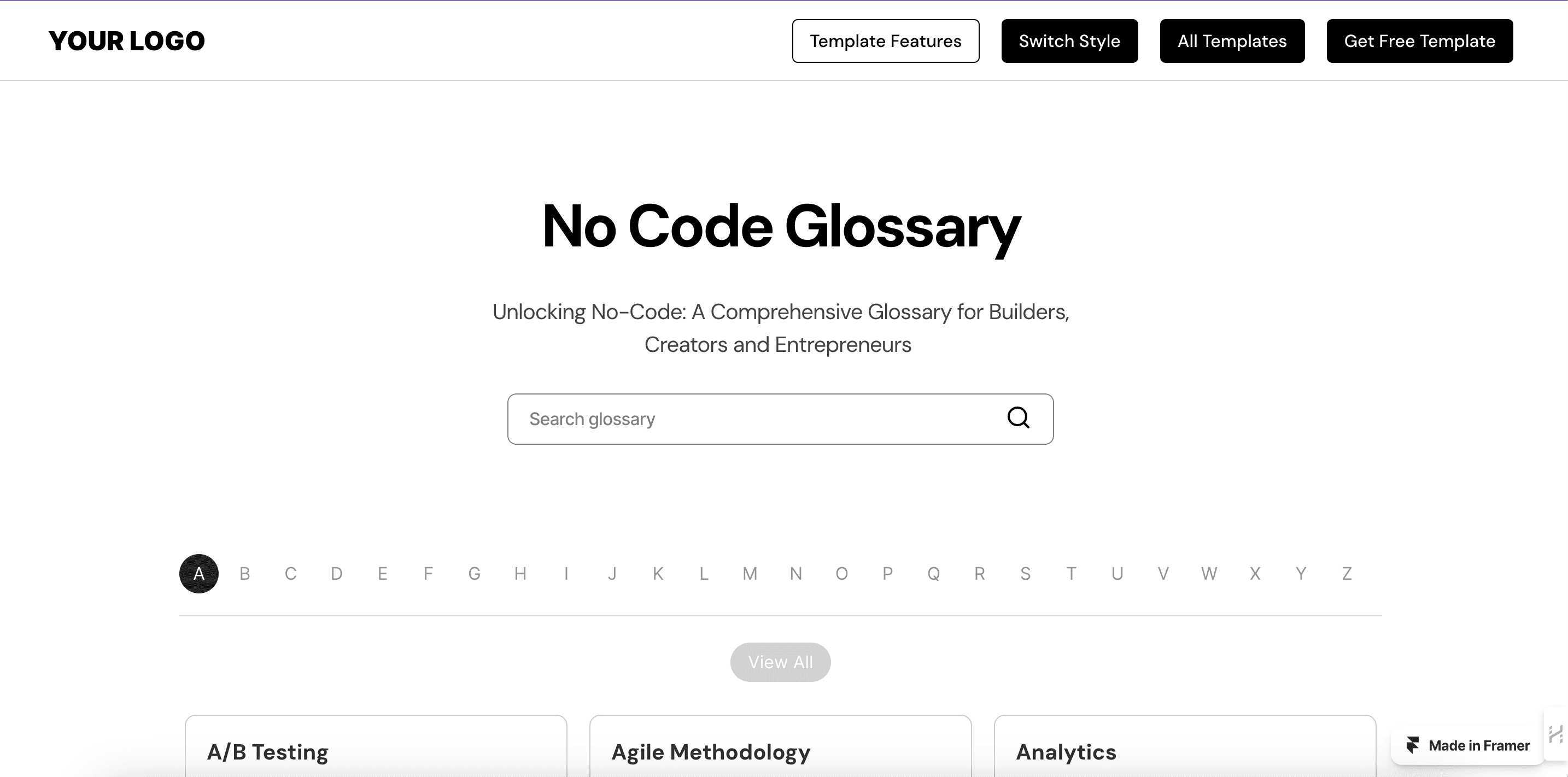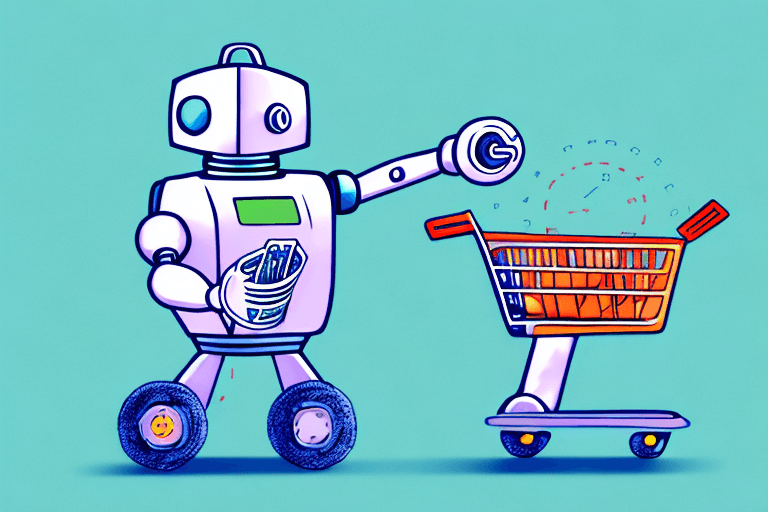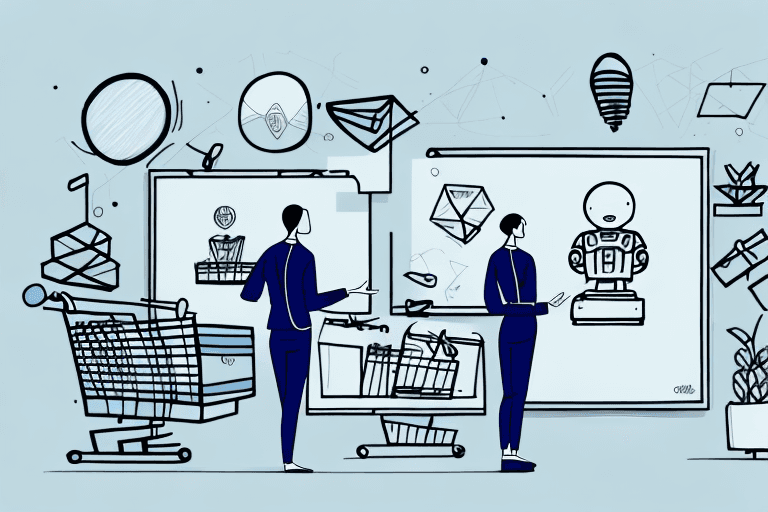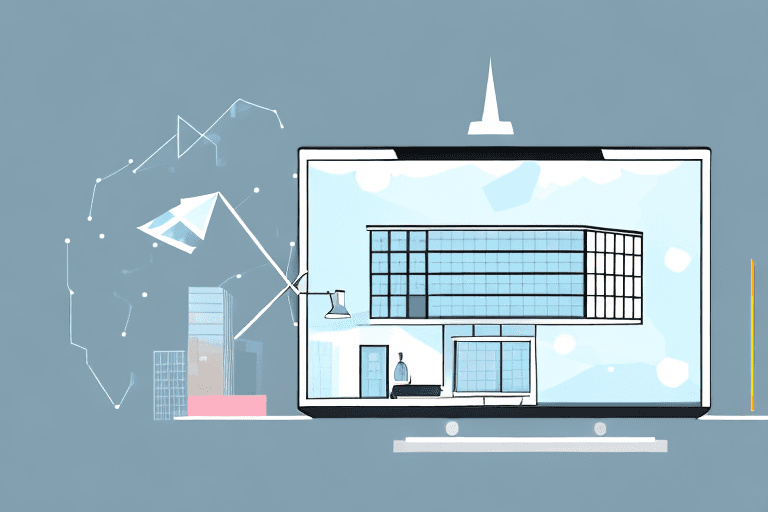Table of Contents
Webflow and Bubble are leading website creation tools, each with distinct strengths. Webflow excels in crafting beautiful, interactive websites, while Bubble empowers users to build feature-rich web applications. However, if your project demands both captivating design and advanced functionality like user accounts, complex workflows, and real-time data manipulation, migrating from Webflow to Bubble might be the answer.
This comprehensive guide will equip you with the knowledge and tools for a seamless migration. We'll delve into the steps involved, from preparing your Webflow project to setting up your Bubble site, migrating content and design, and finally testing and launching your enhanced application. By following this guide, you can leverage the best of both platforms to create a truly powerful online experience.
Understanding the Differences Between Webflow and Bubble
Choosing the right platform depends on your specific needs. Here's a breakdown of Webflow and Bubble's strengths and potential limitations:
Webflow
Often described as a "design-first" platform, Webflow excels at crafting visually captivating websites with a user-friendly interface. It allows designers and developers to create responsive layouts, animations, and complex interactions without needing to write code. However, when it comes to building full-fledged web applications with intricate user functionality and data management, Webflow's capabilities may fall short.
Features:
Visually-driven design: Webflow offers a user-friendly interface with drag-and-drop functionality, making it easy to create visually appealing and responsive websites.
CMS integration: Content management capabilities allow for easy updates without needing code.
SEO optimization: Built-in tools and clean code structure make it easier to optimize your website for search engines.
Limitations:
Limited interactivity: While Webflow allows for some animations and interactions, it isn't ideal for building complex web applications.
Customization limitations: While offering a lot of flexibility, there are limitations on how deeply you can customize specific aspects.
Scalability concerns: Scaling complex applications built on Webflow can be challenging.
Bubble
This platform, on the other hand, is a true no-code application builder. Bubble offers a more robust set of tools for building interactive web applications, complete with user authentication, databases, workflows, and APIs. Unlike Webflow, Bubble requires a more conceptual understanding of software logic, although it eliminates the need for writing code from scratch.
Features:
No-code development: Bubble allows you to build web applications with a visual interface, eliminating the need for coding expertise.
Database management: Built-in database functionality makes it easy to store and manage user data.
Scalability: Designed for building complex applications, Bubble offers greater scalability for future growth.
Customizable workflows: Bubble empowers you to define complex workflows and user interactions within your application.
Limitations:
Learning curve: While no coding is required, understanding Bubble's logic and functionalities takes some time to learn.
Design flexibility: While customizable, Bubble might require more effort to achieve the same visual finesse as Webflow.
Pricing structure: Bubble's pricing plans can be more expensive than Webflow's for simpler projects.
Who should consider migrating from Webflow to Bubble?
If your Webflow website has outgrown its static capabilities and you require:
User accounts and data management
Dynamic content and interactions
Integration with external services
Complex workflows and functionalities
Then migrating to Bubble is a strategic step towards building a robust and scalable web application.
Before You Begin: Preparing for the Migration
Migrating from Webflow to Bubble isn't a one-click process. However, with proper preparation, you can streamline the transition and minimize potential hiccups. This section will equip you with the essential steps to take before diving into the migration itself.
1. Gaining a Bird's Eye View of the Migration Process:
The migration process can be broadly broken down into several key stages:
Preparation: Back up your Webflow site, set up a Bubble account, and familiarize yourself with Bubble's interface.
Exporting: Extract your Webflow site's content and structure for import into Bubble.
Site Setup: Create a new Bubble site and import your exported data.
Content and Design Migration: Meticulously migrate your Webflow pages, content, design elements, and interactive components to Bubble.
Testing and Launch: Thoroughly test your migrated Bubble site and ensure a smooth launch.
2. Securing Your Webflow Project: The Importance of Backups
Before embarking on any migration, it's crucial to create a complete backup of your Webflow project. This backup serves as a safety net in case any unforeseen issues arise during the migration process. Webflow offers a built-in export functionality that allows you to download your site's content and structure as a ZIP file.
3. Setting Up Your Bubble Account: The Gateway to Powerful Apps
If you haven't already, head to Bubble's website and create a free account. Bubble offers a generous free plan that allows you to experiment with the platform and build basic applications. As your project requirements grow, you can upgrade to a paid plan that unlocks advanced features and increased capacity.
4. Demystifying Bubble's Interface: A Quick Familiarization
Bubble boasts a user-friendly interface with a learning curve. However, familiarizing yourself with the core functionalities beforehand will significantly enhance your migration experience. Spend some time exploring Bubble's interface, understanding concepts like "things," "data," "workflows," and the visual editor. Numerous tutorials and resources are available on Bubble's website to assist you in this process.
Step 1: Exporting Your Webflow Site - The Foundation for Migration
The first step in your migration journey involves extracting your Webflow site's content and structure. This exported data will serve as the building blocks for recreating your site within Bubble. Here, we'll explore two primary methods for exporting your Webflow site:
1. Leveraging Webflow's Built-in Export Feature:
Webflow offers a convenient built-in functionality for exporting your site. Here's how to navigate this process:
Access your Webflow project's dashboard.
Click on the "Settings" tab.
Locate the "Export" section within the settings menu.
Click the "Download" button to initiate the export process. Webflow will compress your site's content and structure into a ZIP file.
2. Utilizing Third-Party Tools for Exporting:
While Webflow's built-in export feature is adequate for basic projects, some users might prefer more granular control over the export process. Here's where third-party tools come into play. Several plugins and extensions can be integrated with Webflow to export your site's content in various formats, including JSON and code.
Choosing the Right Export Method:
For most Webflow sites, the built-in export functionality should suffice. However, if you require more control over the exported data or are working with a complex project, consider exploring third-party export tools.
Ensuring a Smooth Export:
Here are some additional tips to ensure a successful export process:
Double-check your export settings: Before initiating the export, ensure you're exporting all the necessary elements, including pages, content, and design assets.
Maintain a clean and organized Webflow project: A well-structured Webflow project will translate into a cleaner and more manageable export.
Consider future maintenance: If you anticipate making edits to your Webflow site in the future, consider exporting your site periodically to maintain an up-to-date backup.
By following these steps and recommendations, you can effectively export your Webflow site and prepare the foundation for your Bubble application.
Step 2: Setting Up Your Bubble Site - Building the Canvas
With your Webflow site exported, it's time to set up your new home in Bubble. This section will guide you through creating a new Bubble site and importing your exported data.
1. Creating a New Bubble Site:
Log in to your Bubble account and click the "New App" button. Choose a name for your Bubble application and select a blank template as the starting point. Bubble offers various pre-built templates for specific functionalities, but for a clean migration from Webflow, a blank template is ideal.
2. Importing Your Webflow Site into Bubble:
There are two primary methods for importing your exported Webflow data into Bubble:
Utilizing Bubble's Built-in Import Feature: Bubble offers an import functionality that allows you to upload your Webflow export ZIP file. This method streamlines the import process for basic website structures. However, it may not translate complex interactions or functionalities perfectly.
Manually Recreating Your Site in Bubble: For intricate projects or situations where the built-in import encounters limitations, you might opt for manually recreating your Webflow site within Bubble. This approach offers more control over the migration process but requires a deeper understanding of Bubble's functionalities.
Choosing the Right Import Method:
The optimal import method depends on the complexity of your Webflow site. If your site is primarily static with basic interactions, the built-in import might suffice. For more complex projects, manual recreation in Bubble offers greater control.
3. Customizing Your Bubble Site's Design and Layout:
Once you've imported your Webflow data, it's time to customize the look and feel of your Bubble site. While the import process might bring over some basic design elements, you'll likely need to fine-tune the appearance within Bubble's interface. Bubble's visual editor provides a user-friendly platform for customizing your site's design and layout.
Step 3: Migrating Pages and Content - Breathing Life into Your Bubble Site
Having established the foundation in Bubble, it's time to meticulously migrate your Webflow site's pages and content. This stage involves transferring your website's structure, text content, images, and other media elements to your new Bubble application.
Migrating Webflow Pages to Bubble:
There are two primary approaches for migrating your Webflow pages:
One-to-One Page Migration: This method involves creating a corresponding Bubble page for each Webflow page. This approach maintains the original site structure and navigation flow.
Consolidation and Restructuring: For complex websites with numerous pages, consider consolidating content into fewer Bubble pages with reusable elements. This can streamline your Bubble application and improve maintainability.
Best Practices for Organizing Your Bubble Site:
Logical Page Hierarchy: Organize your Bubble pages in a logical and intuitive hierarchy that reflects your website's navigation structure.
Grouping Related Content: Group related content elements within Bubble's "Groups" feature to enhance organization and reusability.
Utilizing Bubble's "Reusable Elements": Bubble allows you to create reusable elements like headers, footers, and navigation bars. This can significantly improve development efficiency.
Ensuring SEO-Friendliness in Bubble:
While Bubble doesn't natively manage SEO (Search Engine Optimization) as effectively as Webflow, you can implement best practices to optimize your Bubble site for search engines:
Utilize Descriptive Page Titles and Meta Descriptions: Include relevant keywords in your Bubble page titles and meta descriptions to improve search engine visibility.
Maintain Consistent URLs: If possible, maintain similar URL structures between your Webflow and Bubble sites to minimize disruption for search engines.
Create a Sitemap and Submit it to Search Engines: Generate a sitemap of your Bubble site and submit it to search engines like Google and Bing to help them index your content effectively.
By following these guidelines, you can effectively migrate your Webflow pages and content to Bubble while ensuring a smooth transition for search engines.
Step 4: Migrating Design Elements - Shaping the Visual Identity
The visual appeal of your website plays a crucial role in user experience. This section focuses on migrating your Webflow site's design elements to Bubble, ensuring your Bubble application retains the intended aesthetic.
Migrating Design Elements from Webflow:
Here's how to migrate various design elements from Webflow to Bubble:
Images and Videos: Download all your images and videos from Webflow and upload them to Bubble's asset manager. You can then reference these assets within your Bubble pages.
Fonts and Colors: Identify the fonts and color palettes used in your Webflow site. Bubble allows you to define custom fonts and color styles that can be applied consistently throughout your application.
Custom Design Elements: For more complex design elements like custom buttons, progress bars, or animations, you might need to recreate them within Bubble using its design tools and plugins.
Best Practices for Customizing Your Bubble Site's Design:
Leverage Bubble's Design Features: Explore Bubble's built-in design features like responsive layouts, flexbox, and responsive effects to achieve your desired visual outcome.
Utilize Plugins for Advanced Design: Bubble offers a vast library of plugins that can extend its design capabilities. Explore plugins for specific design elements like carousels, pricing tables, or custom forms.
Maintain Design Consistency: Ensure consistency in your design elements across all Bubble pages to maintain a cohesive visual identity for your application.
Ensuring Responsiveness and User-Friendliness:
In today's mobile-first world, it's crucial for your Bubble site to adapt seamlessly to different screen sizes. Bubble's responsive design features allow you to optimize your site's layout and user experience for various devices. Here are some additional tips for user-friendliness:
Clear Navigation: Design a clear and intuitive navigation system within your Bubble application to ensure users can easily find the information they seek.
Accessibility Considerations: Ensure your Bubble site is accessible to users with disabilities by adhering to web accessibility guidelines.
By meticulously migrating your design elements and prioritizing responsiveness, you can ensure your Bubble application retains the visual appeal and user-friendly experience of your original Webflow site.
Step 5: Migrating Interactive Elements - Bringing Your Site to Life
Webflow empowers you to create basic interactive elements like buttons, forms, and hover effects. However, Bubble shines in crafting intricate user interactions and functionalities. This section explores migrating your Webflow site's interactive elements to Bubble, transforming your static website into a dynamic web application.
Understanding Interactive Elements in Bubble:
Bubble offers a robust system for building interactive elements through its concept of "workflows." Workflows allow you to define specific actions and conditional logic based on user interactions or data changes within your application.
Migrating Webflow Interactions to Bubble:
Here's a breakdown of migrating common Webflow interactions to Bubble:
Buttons and Click Events: In Bubble, you can define workflows triggered by user clicks on buttons. These workflows can then perform various actions, such as navigating to a different page, updating data, or displaying pop-up messages.
Forms and User Input: Bubble allows you to create custom forms and capture user input. Workflows can then be triggered upon form submission, enabling functionalities like sending emails, storing data in Bubble's database, or performing calculations.
Hover Effects and Animations: While Bubble doesn't directly replicate Webflow's hover effects, you can achieve similar functionalities by utilizing workflows and conditional formatting.
Best Practices for Customizing Your Bubble Site's Interactivity:
Leverage Bubble's Workflows: Master Bubble's workflow functionality to define complex user interactions and application logic.
Maintain a User-Centric Approach: Design your Bubble site's interactions with a focus on intuitive user experience and clear feedback mechanisms.
Utilize Plugins for Advanced Interactions: Explore Bubble's plugin marketplace for functionalities like custom carousels, interactive maps, or advanced form validation.
Ensuring User-Friendly and Accessible Interactions:
Clear Feedback: Provide clear visual or textual feedback to users upon interaction with your Bubble site's elements.
Keyboard Accessibility: Ensure your Bubble site's interactive elements are accessible to users who rely on keyboards for navigation.
By effectively migrating your Webflow interactions and leveraging Bubble's workflow capabilities, you can transform your static website into a dynamic and user-engaging web application.
Step 6: Migrating Animations and Transitions - Adding Polish to Your Bubble Site
Subtle animations and transitions can significantly enhance user experience and visual appeal. This section delves into migrating your Webflow site's animations and transitions to Bubble, ensuring a smooth and polished user journey.
Understanding Animations in Bubble:
While Bubble doesn't offer a direct equivalent to Webflow's animation features, you can achieve similar effects using various techniques:
Animations within the Bubble Editor: Bubble's editor allows for basic animations on elements like opacity changes or simple position adjustments.
Leveraging Plugins for Advanced Animations: The Bubble plugin marketplace offers various plugins specifically designed for creating complex animations and transitions within your application.
Custom Code Integrations: For highly customized animation needs, you can integrate custom code snippets using Bubble's Javascript functionality. However, this approach requires advanced programming knowledge.
Best Practices for Customizing Your Bubble Site's Animations:
Prioritize Performance: Ensure your animations are lightweight and optimized to avoid slowing down your Bubble site's loading speed.
Maintain User Focus: Use animations strategically to enhance user experience, not distract from the core content or functionalities.
Maintain Consistency: Maintain a consistent animation style throughout your Bubble site to create a cohesive visual experience.
Ensuring Smooth and Optimized Animations:
Test Animations on Different Devices: Ensure your animations render smoothly across various devices and screen sizes.
Optimize Animation Complexity: Balance the visual appeal of animations with their performance impact on your Bubble site.
By implementing these strategies, you can effectively migrate your Webflow animations and transitions to Bubble, adding a layer of polish and user engagement to your web application.
Step 7: Testing and Launching Your Bubble Site - Ensuring a Flawless Debut
Migrating your project from Webflow to Bubble is a significant undertaking. Before unleashing your creation to the world, it's vital to thoroughly test your Bubble site and ensure a smooth launch.
Testing Your Bubble Site:
Functional Testing: Meticulously test all functionalities within your Bubble site, including forms, user interactions, workflows, and integrations.
Responsive Design Testing: Verify your Bubble site's responsiveness across various devices and screen sizes. Utilize Bubble's built-in responsive preview mode or browser developer tools.
Usability Testing: Involve potential users or colleagues in usability testing to identify any potential navigation or interaction issues within your Bubble site.
Best Practices for Testing and Launch:
Develop a Testing Checklist: Create a comprehensive checklist outlining all functionalities and elements to be tested within your Bubble site.
Phased Testing Approach: Consider a phased testing approach, starting with core functionalities and gradually progressing towards more intricate features.
Utilize Bubble's Debugging Tools: Bubble offers debugging tools to help identify and troubleshoot any errors or unexpected behaviors within your application.
Ensuring a Successful Launch:
Pre-Launch Optimization: Based on your testing results, address any identified issues and optimize your Bubble site for optimal performance.
Plan Your Launch Strategy: Determine your launch strategy, whether it's a full public launch, a staged rollout to a limited audience, or a private beta test.
Prepare Launch Communication: If applicable, prepare communication materials to announce your Bubble site's launch to your target audience.
By implementing a rigorous testing process and a well-defined launch plan, you can ensure your migrated Bubble site debuts flawlessly and delivers a seamless user experience.
By following this comprehensive guide, you've equipped yourself with the knowledge and tools necessary to successfully migrate your project from Webflow to Bubble. This migration unlocks a world of possibilities, allowing you to leverage Bubble's robust capabilities to transform your website into a powerful and dynamic web application.
Benefits of Migrating from Webflow to Bubble:
By migrating to Bubble, you gain access to:
Enhanced Functionality: Build complex user interactions, manage databases, and integrate with external services.
Scalability for Growth: Bubble's architecture allows your application to scale seamlessly as your project's needs evolve.
Dynamic User Experiences: Craft engaging user experiences with custom workflows, conditional logic, and real-time data manipulation.
As you delve deeper into Bubble's functionalities, explore its vast documentation, tutorials, and a thriving community of developers to propel your project to even greater heights.
Feeling overwhelmed by the migration process? Goodspeed's team of Bubble Experts can guide you seamlessly from Webflow to Bubble. Contact Goodspeed today for a free consultation and unlock the full potential of your web application!
Frequently Asked Questions (FAQs)
1. Will I lose my SEO ranking when migrating from Webflow to Bubble?
There's a possibility of a slight dip in SEO ranking during the initial migration phase. However, by following SEO best practices in Bubble (like using descriptive page titles and meta descriptions), you can minimize the impact and ensure your site regains its ranking over time.
2. Can I migrate a complex Webflow e-commerce site to Bubble?
Yes, Bubble is capable of handling complex functionalities like e-commerce. However, migrating a full-fledged e-commerce store might require advanced Bubble development skills or the assistance of a Bubble expert.
3. How long does it typically take to migrate a Webflow site to Bubble?
The migration timeframe depends on the complexity of your Webflow site. Simple websites can be migrated in a few days, while intricate projects with numerous pages and functionalities might take weeks.
4. Does Bubble offer any pricing plans for migrated applications?
Bubble offers various pricing plans based on monthly active users, storage needs, and functionalities. You can choose a plan that best suits the requirements of your migrated Bubble application.
5. What are the biggest challenges when migrating from Webflow to Bubble?
Some challenges include replicating complex Webflow interactions in Bubble, ensuring a smooth transition for SEO, and potentially encountering limitations in replicating the exact visual design from Webflow within Bubble.


